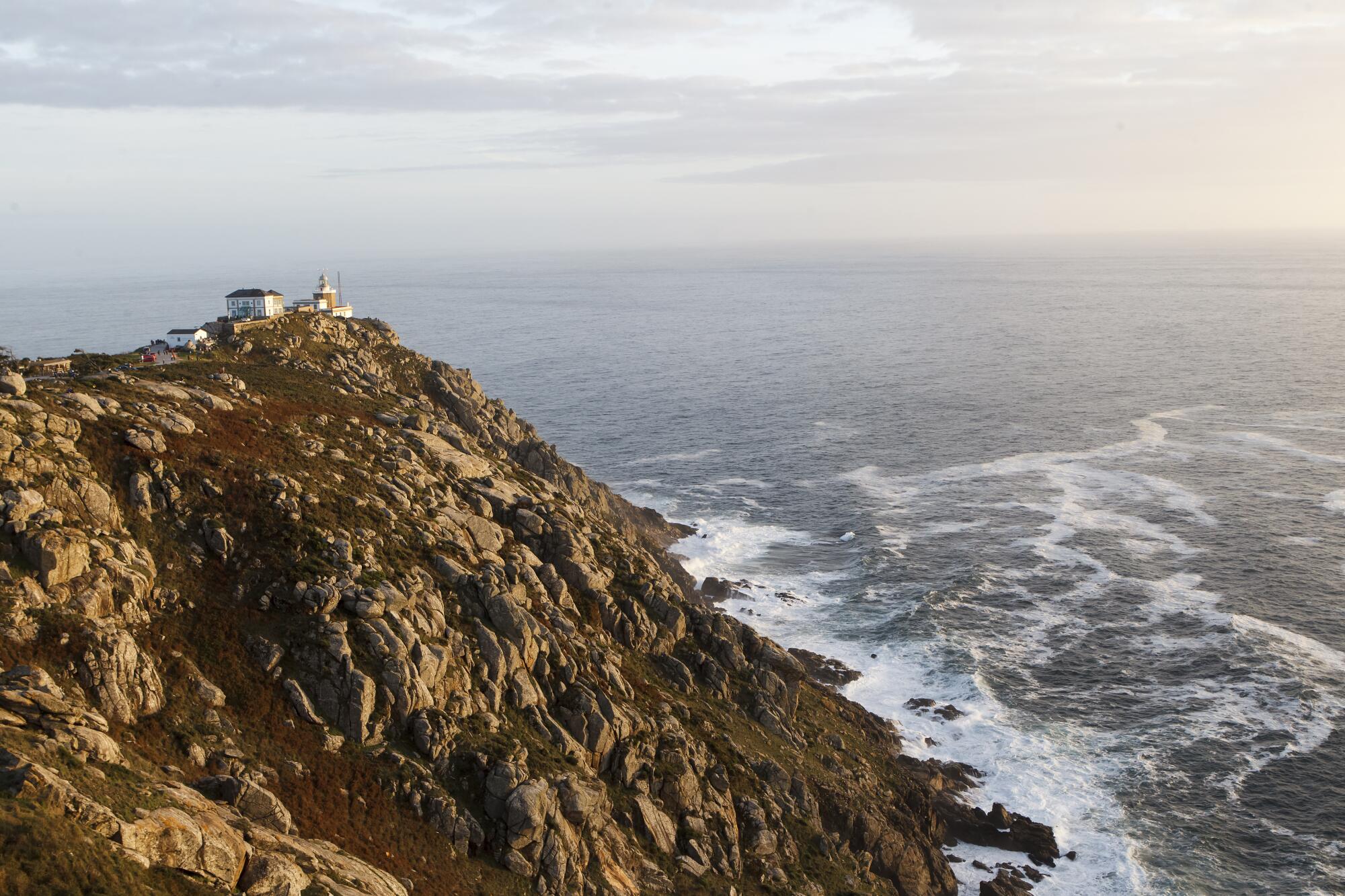
- Share via
FISTERRA, Spain — They descend to the beach in the evening, clambering down grassy cliffs to settle on the sand. They roll cigarettes, strum guitars, burn incense, throw dogs driftwood.
At the height of the summer months, a little after 10 p.m., they turn west, transfixed as the sun melts into the Atlantic. When the sky lights up gold and fuchsia, some whistle, others applaud. This is sunset in Fisterra, the End of the Earth.
After nightfall, some climb back up the cliffs to sleep in the forest. Others return to the town. Those who remain on the beach crawl into sleeping bags nestled against the rocks, where, some mornings, local police wake them with orders to leave.
Some call them hippies. Some call them troublemakers.
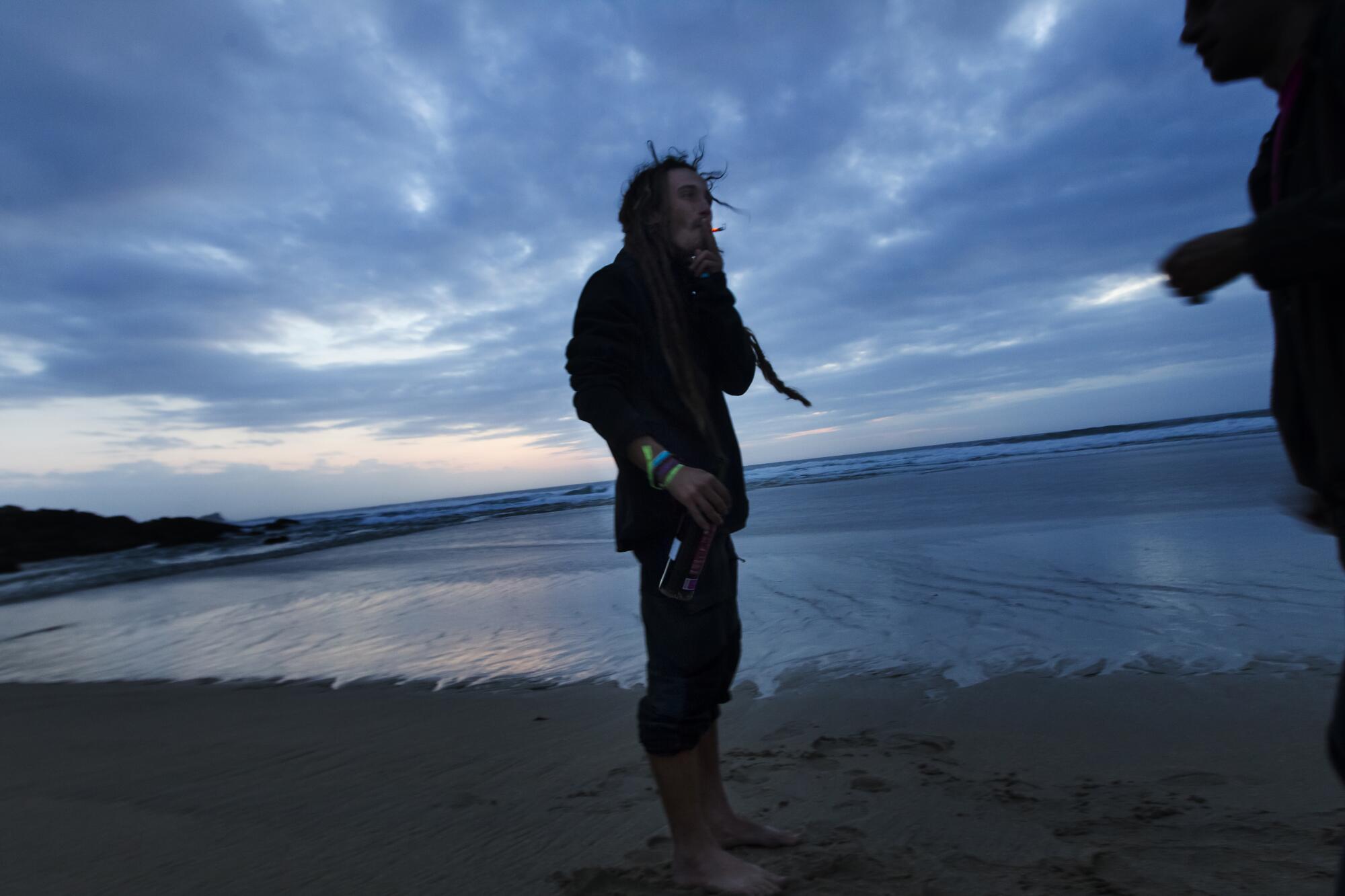
They call themselves pilgrims — peregrinos, in Spanish — and come from around the world: Germany and Hungary, England and Italy, and places far beyond. They work in restaurants, panhandle near supermarkets and sell handmade jewelry on the beach. Most walked the famed 500-mile Camino de Santiago — the Way of St. James — and continued to this small fishing town on Spain’s northwestern coast.
Some have lived here for years; a few, just a week. They stay for love, for freedom, for artistic inspiration. They run away from families, drugs, jobs. Fisterra heals, they say.
No one can say exactly how many live here. Maybe 20. Maybe 50.
Their stories are similar: Once they ran out of land, they had nowhere else to go.
“I said I would stay two nights,” said Marge Ots, 41, an Estonian who lives with a handful of other pilgrims above a bar on Fisterra’s main road. “I’ve been here two years.”
The Atlantic surrounds Fisterra on three sides. To the east, a crescent-shaped beach forms a tranquil cove where snorkelers glide and fishermen set out their nets. To the west, austere cliffs hem in the Praia Mar de Fóra, a beach whose dangerous undercurrents have swept away countless swimmers. To the south, the peninsula tapers into a narrow, forested cape, where people gather by the lighthouse and watch the sunset each night.
Fifty years ago, the town’s geography made fishing a lucrative line of work. Residents dived for navajas — razor shell clams, so named for the thin shells — that burrowed into the sand. They set octopus traps on the seafloor and pried percebes — gooseneck barnacles, a regional delicacy — from slippery rocks during low tide.
‘I said I would stay two nights. I’ve been here two years.’
— Marge Ots
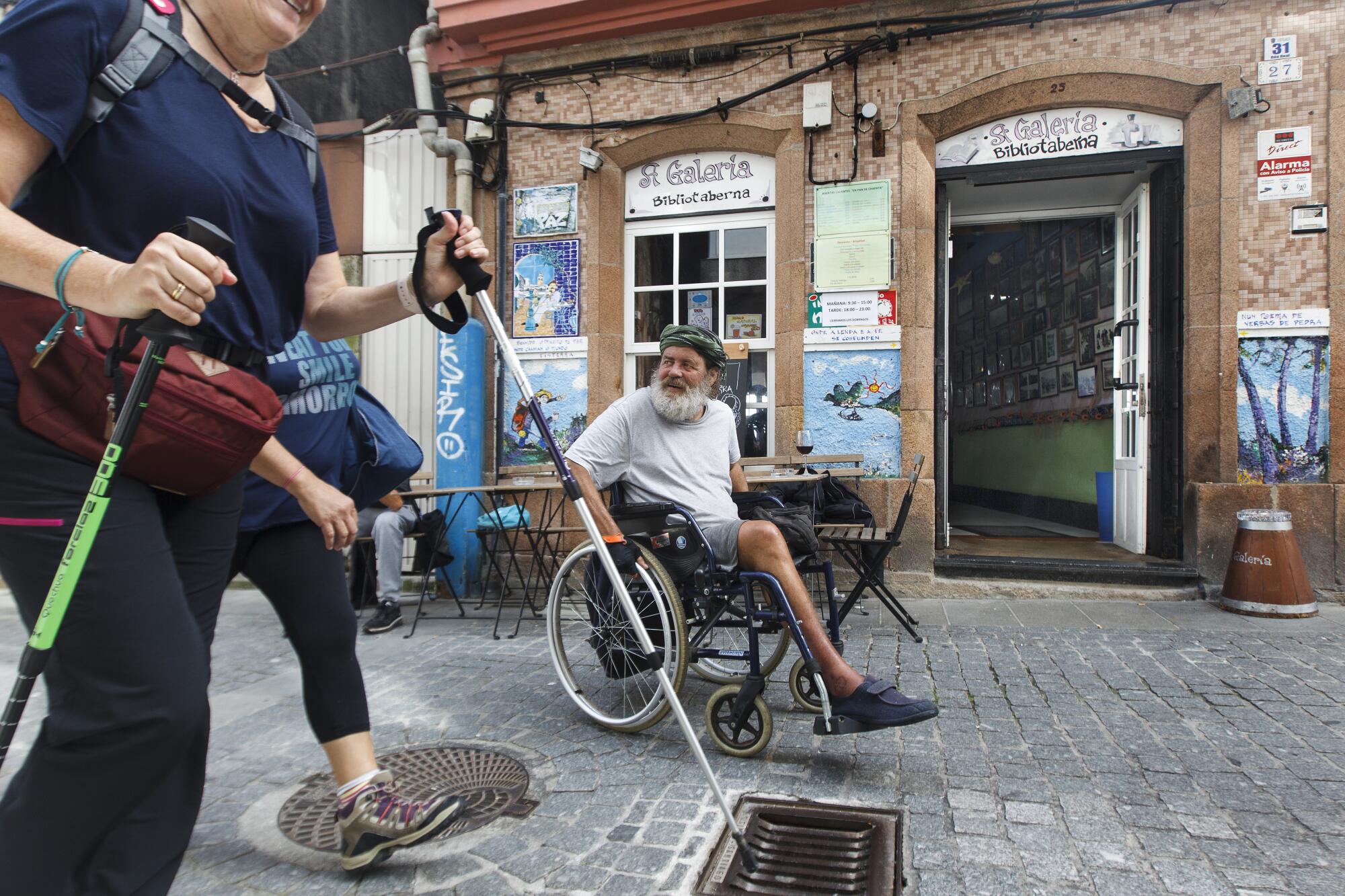
Fisterra had a historical connection to the centuries-old pilgrimage, in which the faithful walked from southern France to Santiago de Compostela, where the Apostle James‘ remains are said to be buried. Thousands make the trek each year.
Ancient pilgrims sometimes continued on another 50 miles to the sea to wash their filthy clothes, but Santiago de Compostela was seen as the culmination of the Camino.
That changed in the 2000s. Camino associations and travel guides touted Fisterra as a gem on Galicia’s rugged Costa da Morte, the Coast of Death — named for the untold numbers of shipwrecks along its shores.
In 2009, 2,400 pilgrims visited Fisterra. A year later, that number exploded to 17,000.
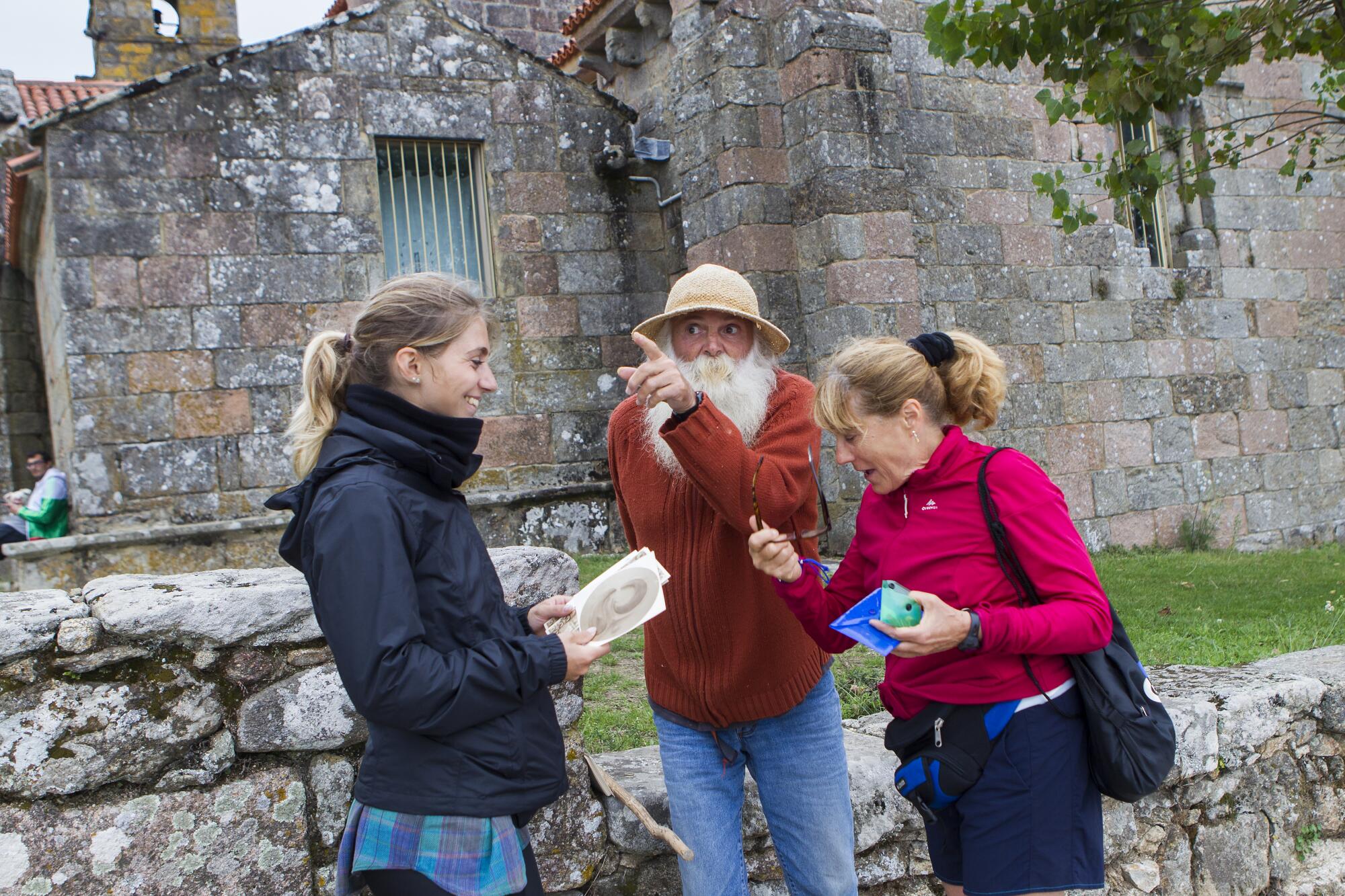
The town transformed. Hotels, restaurants and albergues — cheap accommodations for pilgrims — sprouted up everywhere. Today, about half the town’s working population earns money from the sea and the other half works tourism, estimates Fisterra Mayor José Manuel Marcote.
“It’s a change that’s been imposed on us,” he said. “It has changed our way of life.”
The town’s relationship with its visitors is complicated. The walkers bring in money, but they often burn clothes at the lighthouse and sleep on the beach, despite prohibitions.
Then, there are those who never leave.
In this town of 4,000, everyone knows these peregrinos. A Frenchman named Pedro, whose knobby wooden walking stick and scraggly white beard give him the appearance of a slim Santa Claus, sells tourists painted postcards. An Austrian woman named Momo Gruss wanders barefoot and reads tarot cards from behind a shop counter. An Englishman named Quentin Grugeon tends to tomatoes and climbing peas at a local garden.
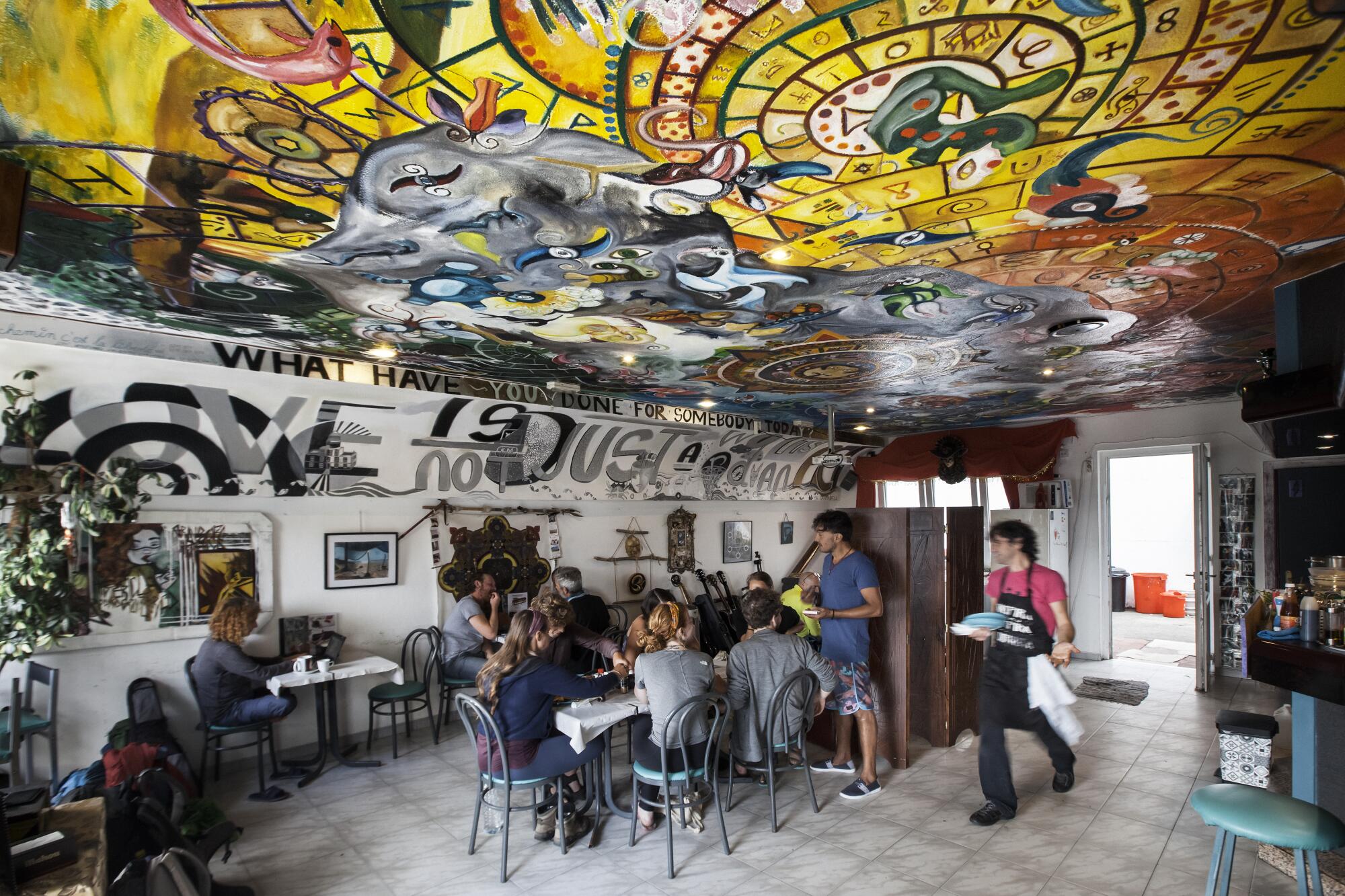
A Spaniard named David López runs the World Family, a bar where pilgrims gather for a nightly dinner and spend weeks — or months — as volunteers.
Gruss, who describes her age as “somewhere between 20 and 40,” walked the Camino in 2014 with her mother, with whom she hadn’t spoken in years. When they arrived in Fisterra, Gruss was immediately struck by the energy of the place, how life here appeared timeless.
After leaving Fisterra, Gruss, short on money, slept on friends’ couches for a few years, uninterested in returning to Vienna but uncertain where to settle. She couldn’t stop talking about Fisterra: its pristine beaches, the Celtic legends that seemed to give the town a mystical quality. Just go back, her friends told her.
When the seasons permitted, she slept on a mattress in the forest, surrounded by wildflowers.
“Here in Fisterra, the concept of homelessness doesn’t exist,” Gruss said. “People live in the forest. People live on the beach. You choose where you sleep. We’re all at home here.”
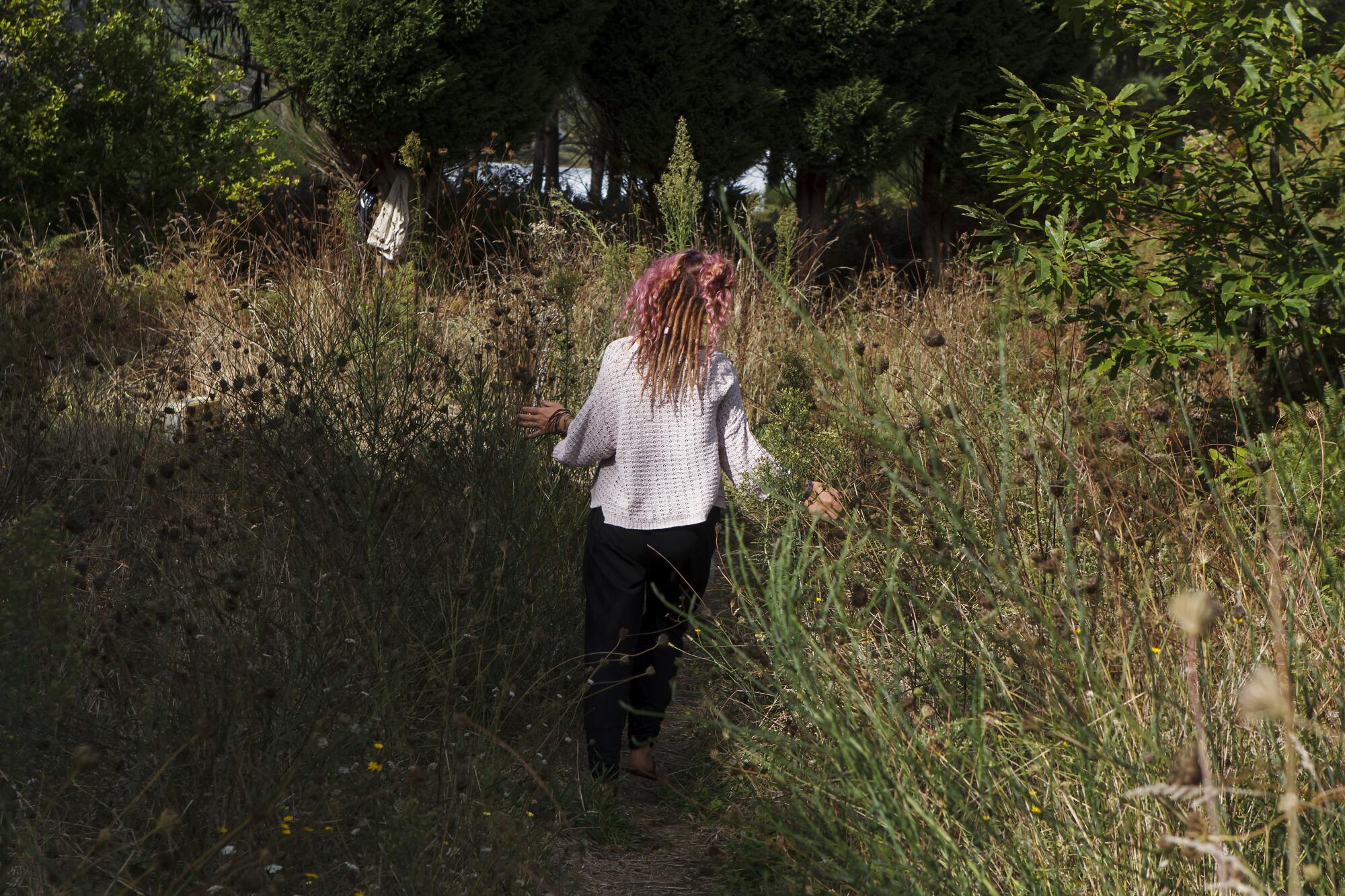
Christine Mack, a German, gave Gruss a job at her clothing shop, as she does with many young foreign women who end up in Fisterra.
Mack, 60, was once given a job here too.
One morning in 2007, when Mack had finished the Camino and was eating breakfast at the Bar Frontera, she met the owner, a Galician man. After a few minutes of conversation, he offered her work in the kitchen.
Mack accepted on a gut feeling. She would take a sabbatical from her desk job and stay six months.
Soon into her stay, however, she realized she didn’t want to leave.
“I was falling in love,” Mack said. She quit her job in Germany and moved to Fisterra to be with the bar owner.
Unlike the others, López, the owner of the World Family, never walked the Camino. He came to Fisterra on a bus.
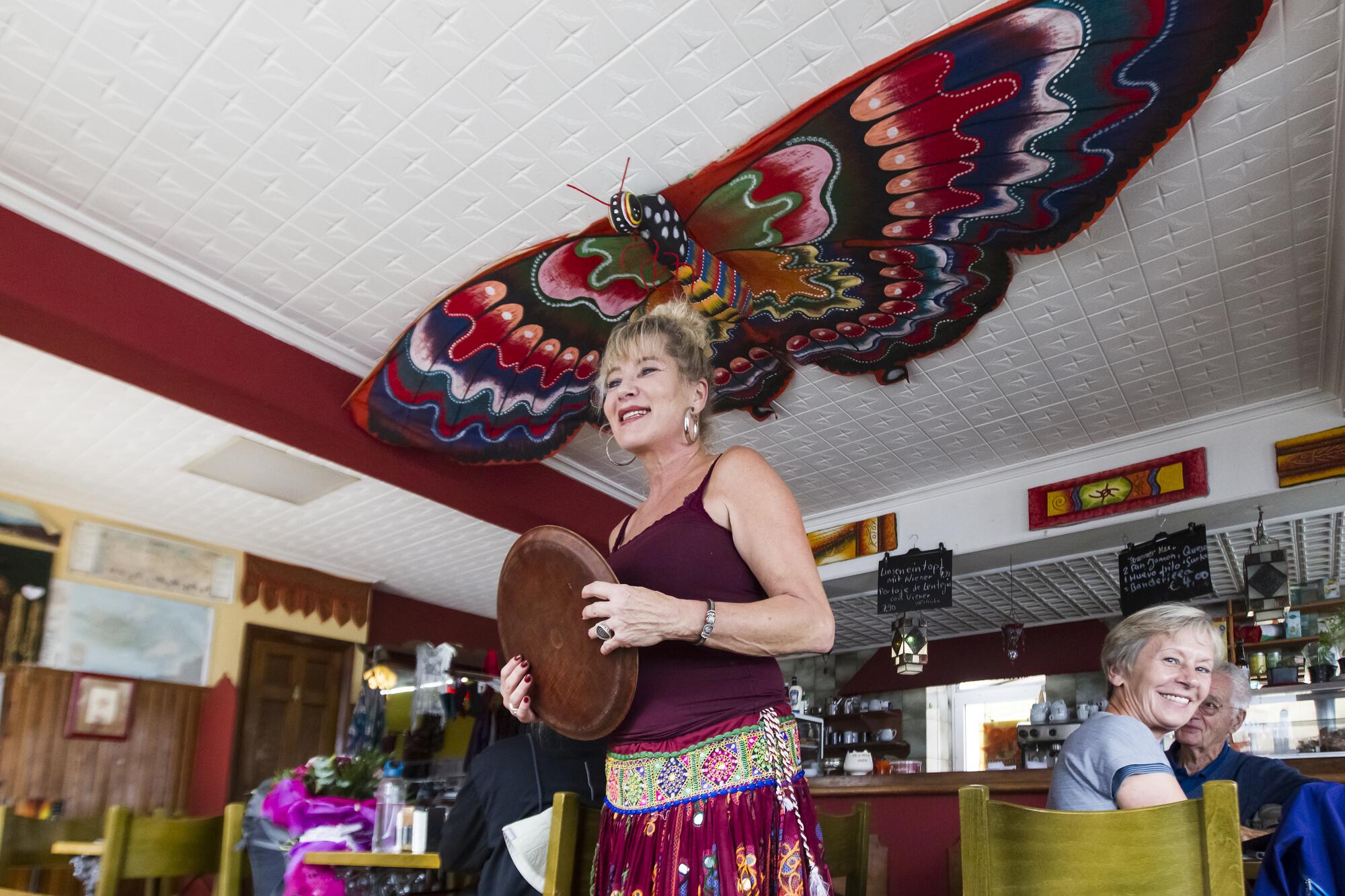
When he arrived in 2014, he was recently divorced, disillusioned with his job at a multinational tobacco company and mourning the death of his father. At the recommendation of a social worker, he worked in Fisterra’s municipal albergue for a few months, then moved onto the Mar de Fóra, where dozens of people slept each night.
The year before, 70 people had camped out on the beach in the tents. A group of locals had complained, and the national police ordered the squatters to leave. Pitching tents on the beach was prohibited.
But the next summer, dozens of pilgrims returned — without tents.
López loved life on the beach. There were candles and guitar sessions and group dinners. He felt part of a community.
López decided to bring the spirit of the beach indoors. In 2015, he and a few friends opened the World Family. Long-term visitors stay on the bar’s second floor; short-term walkers stay on the third.
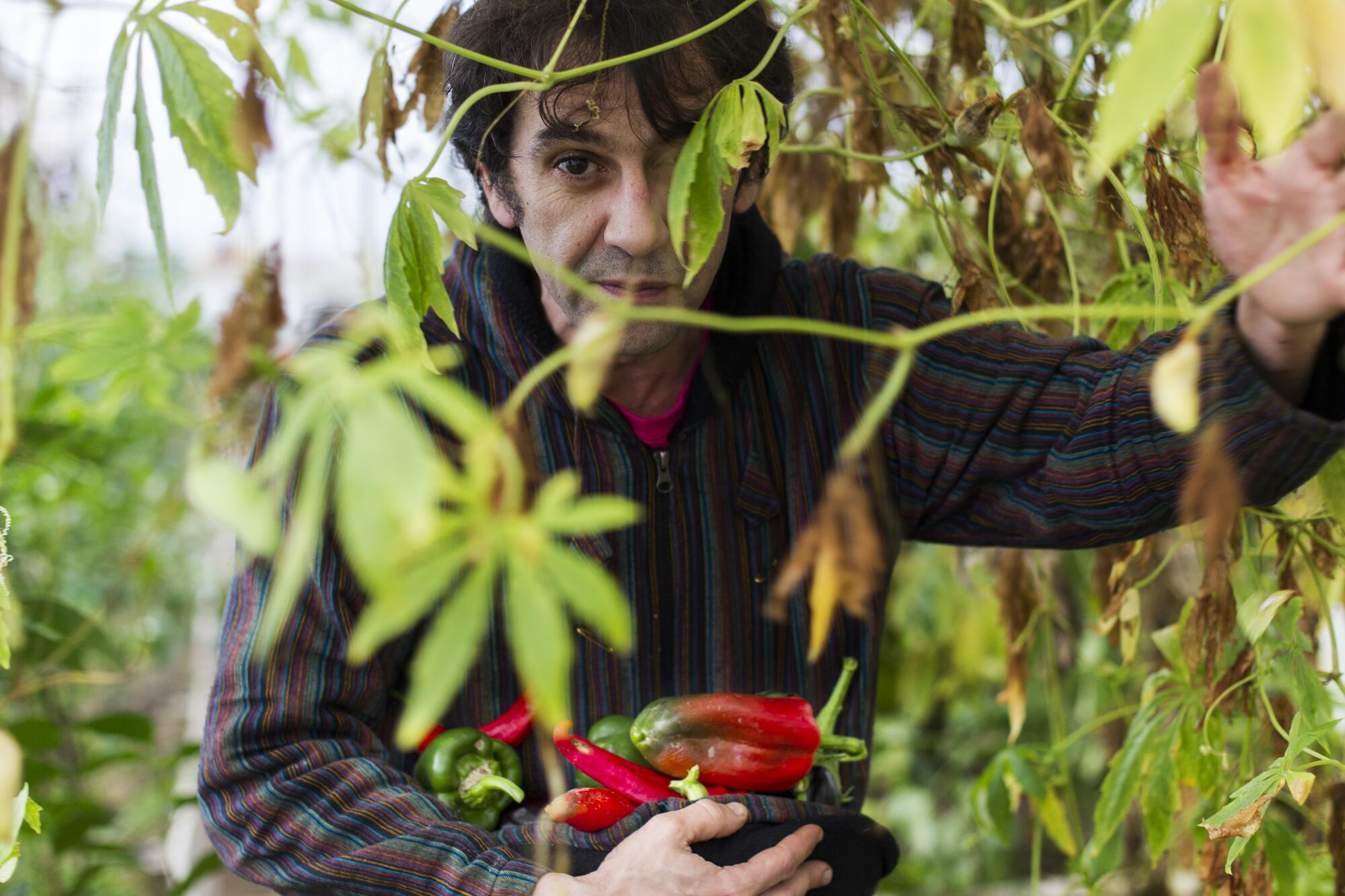
Pilgrims volunteer in the kitchen, at the bar, in the garden. They share vegan dinners, paint murals, spend hours chatting on the patio. At night, the bar becomes a popular party spot, bringing together foreigners and fishermen. López and his co-owners make money from the bar and donations — but not much.
“This system is different than other places in Fisterra,” López said. “It is about what it means to be a pilgrim, not about making money.”
Next door to the bar is the Hotel Langosteira, and the owner, Paulina Mouzo, is wary of her neighbors.
During the beach tent bonanza, she says, locals didn’t like visiting the Mar de Fóra. Now, with the beach-dwellers nearby, Mouzo worries about what might happen to her street.
For years Mouzo had savored the neighborhood’s tranquility, but after the bar opened, her guests began hearing loud music late into the night. Sometimes, they heard people scream. Once, Mouzo said, someone vomited at the doorstep to her hotel. Mouzo, who lives in the hotel, had trouble sleeping.
“They aren’t hippies,” Mouzo said. “This philosophy, love and peace and coexistence, to live freely — they live freely without respect for the other.”
In 2016, Mouzo filed a complaint about the World Family to the town hall. Then she filed another. And another. “We continue reporting them,” she said.
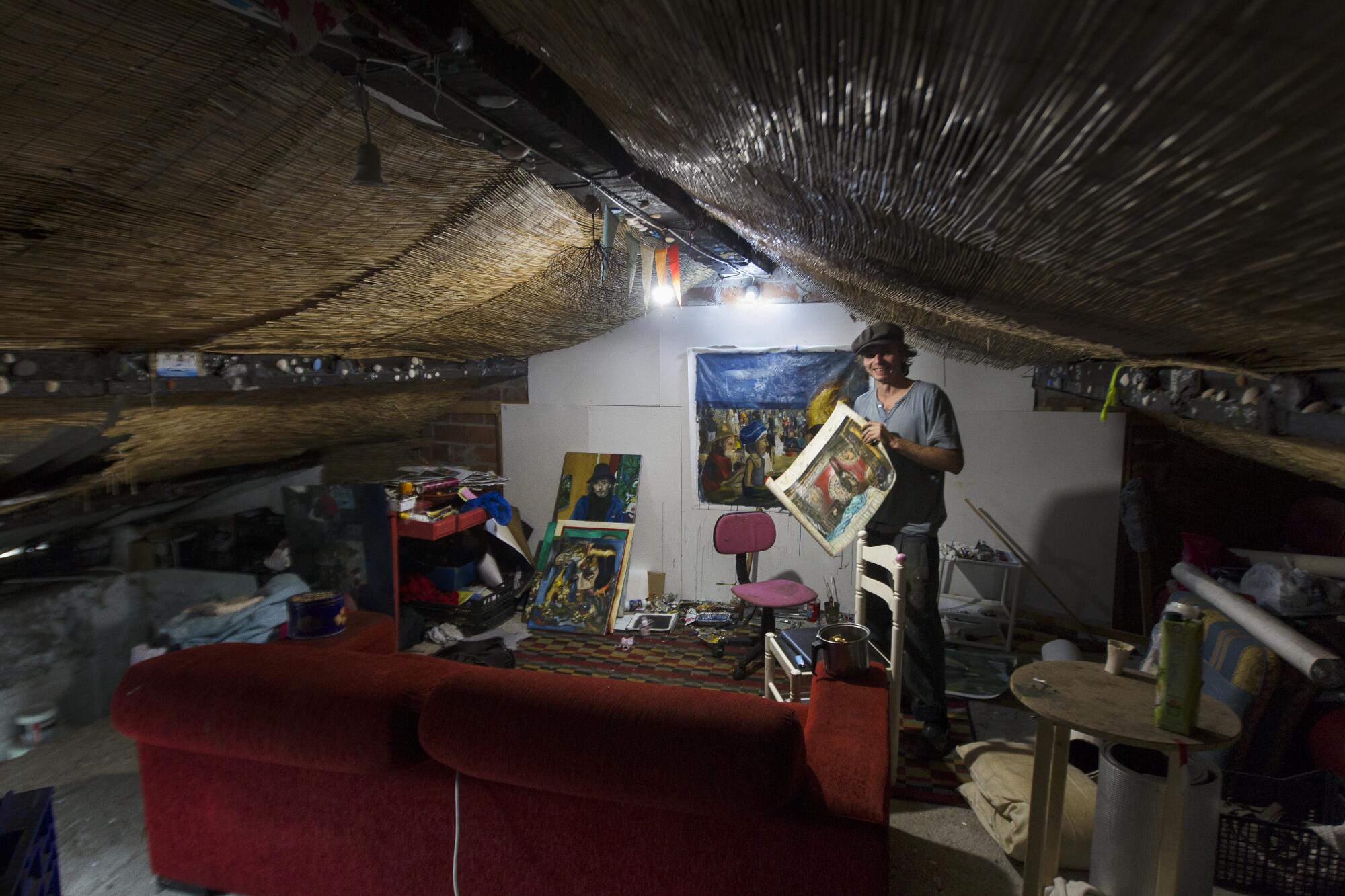
On a humid summer afternoon, Gruss stood barefoot at the shop counter, popping cherry tomatoes into her mouth and staring out the front window. Soft flute music floated from a radio. A Canadian woman who had lingered near the dressing rooms for hours strapped on her traveler’s backpack.
“I’m going,” she said. “Thank you for everything.” She hugged Gruss and walked out.
“She couldn’t decide whether to take the bus back to Santiago,” Gruss said. “I guess she made her decision.”
Gruss looked at her cellphone. She couldn’t remember the day, or the hour. She couldn’t recall what she did the day before, and hadn’t made plans for that evening. Time in Fisterra is marked by sunset and the town’s two seasons: summer and winter.
Fisterra empties out once the winter cold sets in (recent temperatures have been in the high 50s, cool but bearable). Unending rain pounds the streets. Hundred-foot waves crash against cliffs. Hotels are shuttered, some restaurants too. Few pilgrims walk through town.
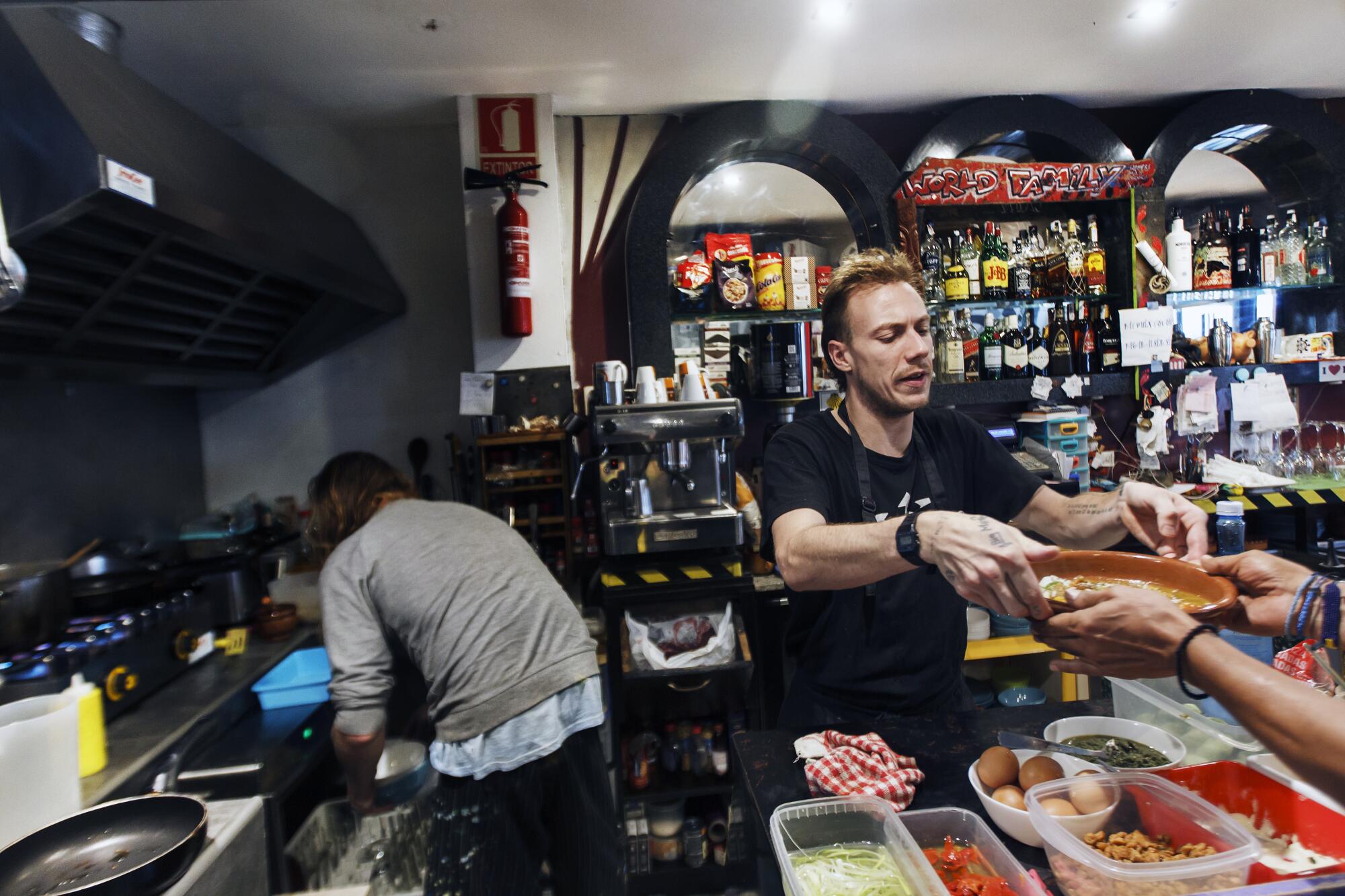
The drifters move from the forest into albergues. They pass their days cooking stews, painting, waiting for the summer. And some, like Gruss, will decide it’s finally time to move on, or to return to the world of deadlines and responsibilities. That’s what she did just a few months ago.
Soon enough, other pilgrims will come to town, some expecting to stay a few days, maybe weeks. But for some, the weeks might stretch into years, and they’ll discover like so many before them that the real destination of their pilgrimage was Fisterra all along, that they were meant to be here, at the End of the Earth.
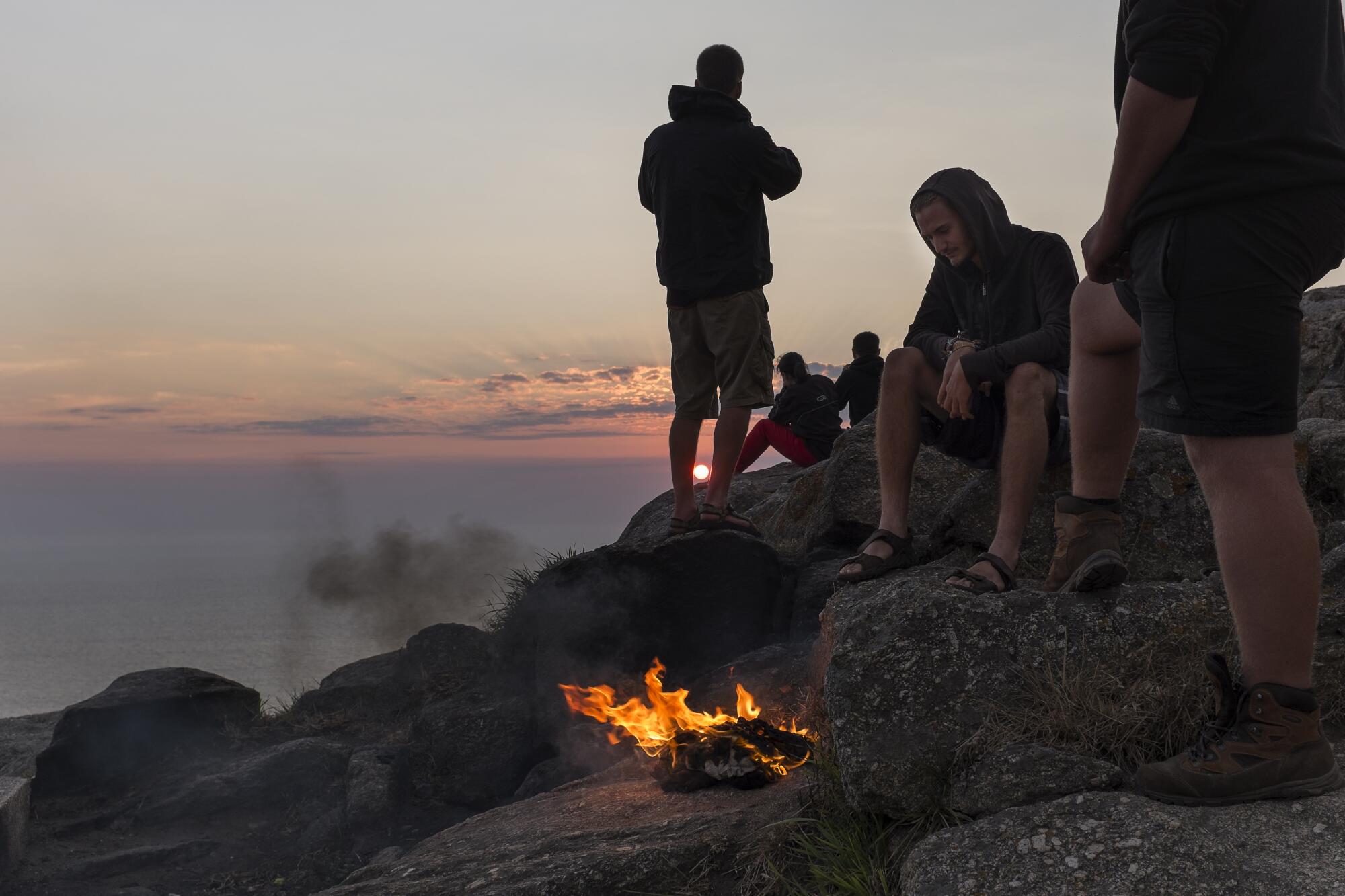
Bernhard is a special correspondent.
More to Read
Sign up for Essential California
The most important California stories and recommendations in your inbox every morning.
You may occasionally receive promotional content from the Los Angeles Times.










